An evolving bank of resources to support Cambridgeshire's Introduction to Making it REAL community-literacy work with families of children aged two to five, across the county.
If you have produced or used a resource to support your Introduction Making it REAL-focused work, please share it with us and we can publish it here.
Remember we also have regular Introduction Making it Real networking opportunities for sharing resource ideas.
Please note, to view the photographs below in full, right-click on the picture and select open image in a new tab.
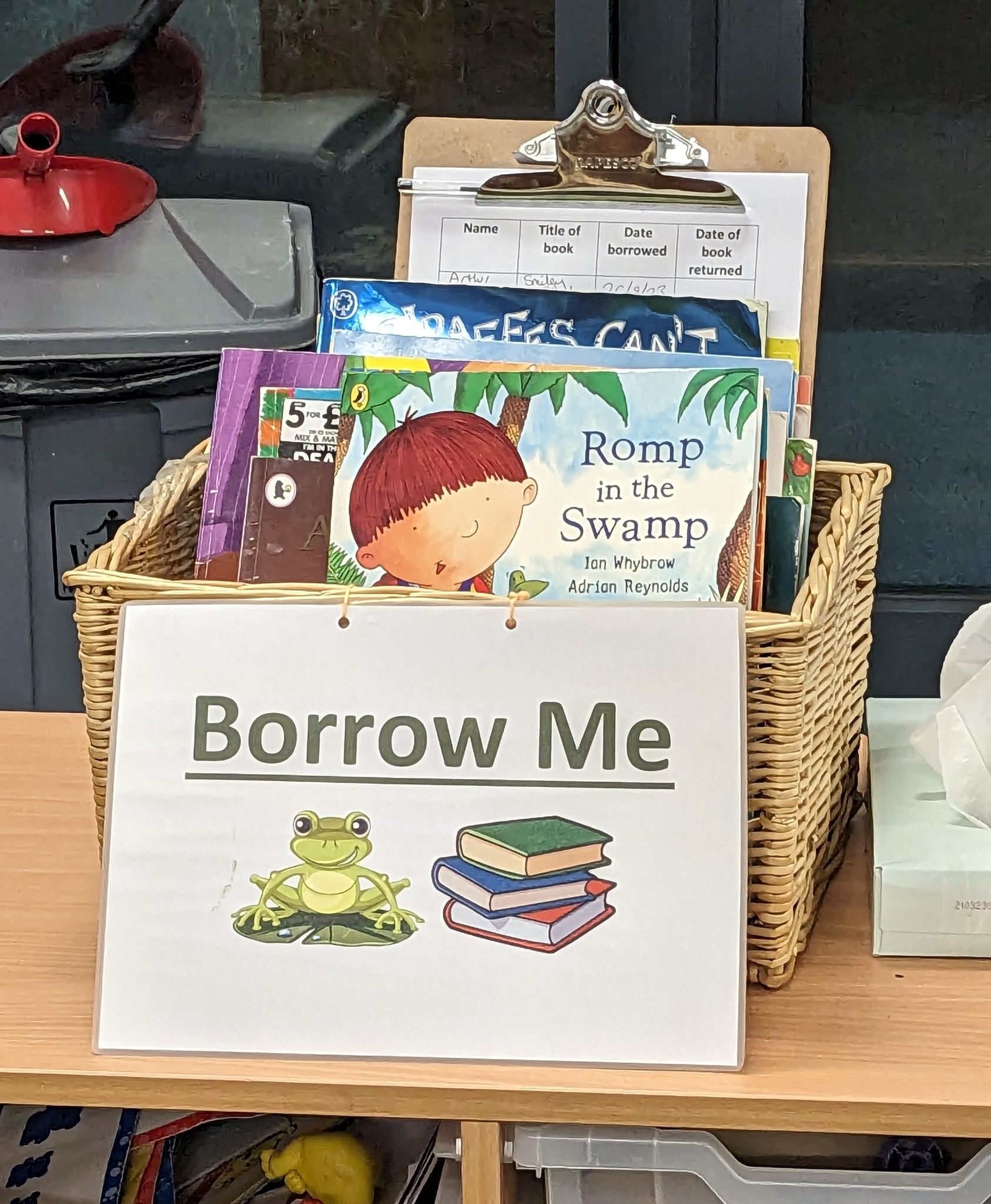
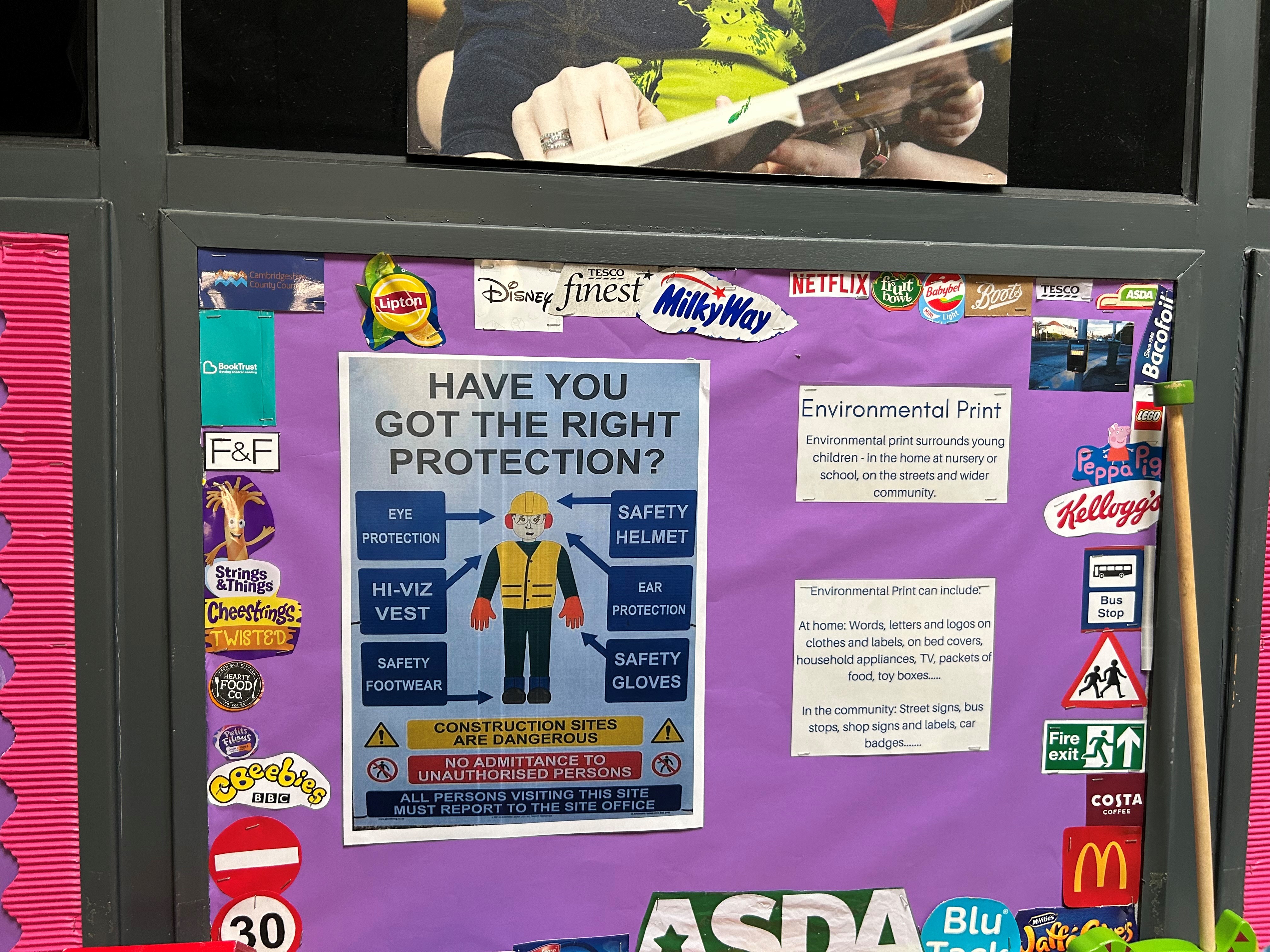

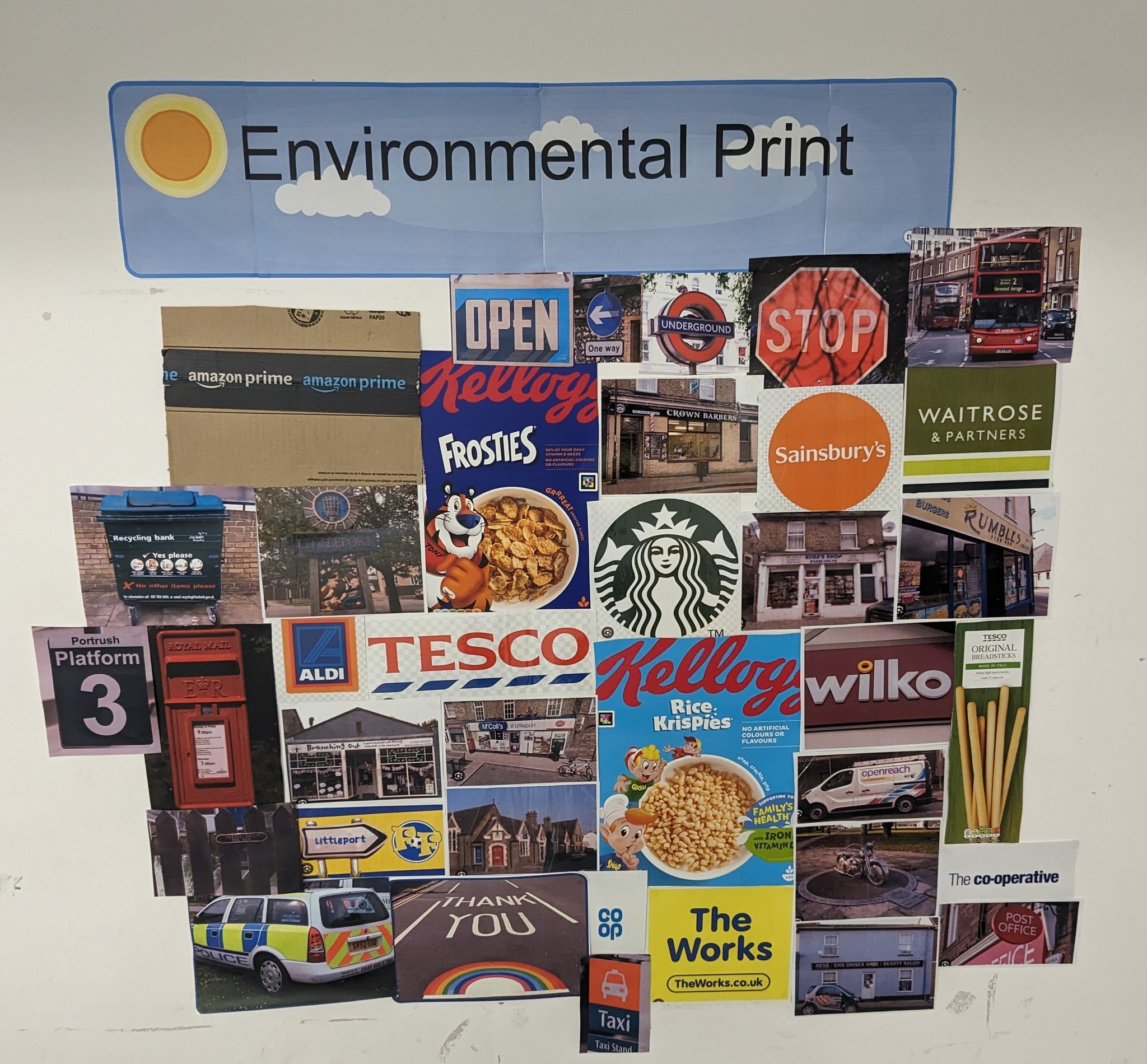
ORIM framework
"REAL has an underpinning framework that helps to plan and evaluate how to support families and share knowledge with parents. It is called ORIM which stands for the first letter of the words:
- Opportunities
- Recognition
- Interaction
- Model
ORIM is based on the idea that these are the four ways in which parents help their children’s learning. All families do these things giving children opportunities to learn, recognising the steps they take as they progress, playing and talking (interacting) and acting as a model for children to imitate. It makes sense for teachers and practitioners to support what families are already doing and help them to do more.” – National Children’s Bureau.
Peter Hannon at the University of Sheffield developed the ORIM framework to describe the activities and attitudes that parents/carers enlist in supporting the development of their children’s early literacy (Hannon, 1995).
How to use the ORIM framework
Opportunities, recognition, interaction, and modelling are mapped against all four literacy strands (Environmental Print, Books, Early Writing, and Oral Language) to produce a grid - the ORIM framework. It should be used flexibly, with practitioners making judgements, ensuring all cells in the framework are covered. It can help practitioners think about provision more widely. What is already done well to support families with literacy at home and where are the gaps?
|
Environmental Print |
Books |
Oral Language |
Early Writing |
|
|
Opportunities |
||||
|
Recognition |
||||
|
Interaction |
||||
|
Model |
When planning with the ORIM framework practitioners can look at a whole column (strand) or a whole row (one aspect of ORIM across all strands), or focus on certain cells (NCB).
Please note, to view the photographs below in full, right-click on the picture and select open image in a new tab.
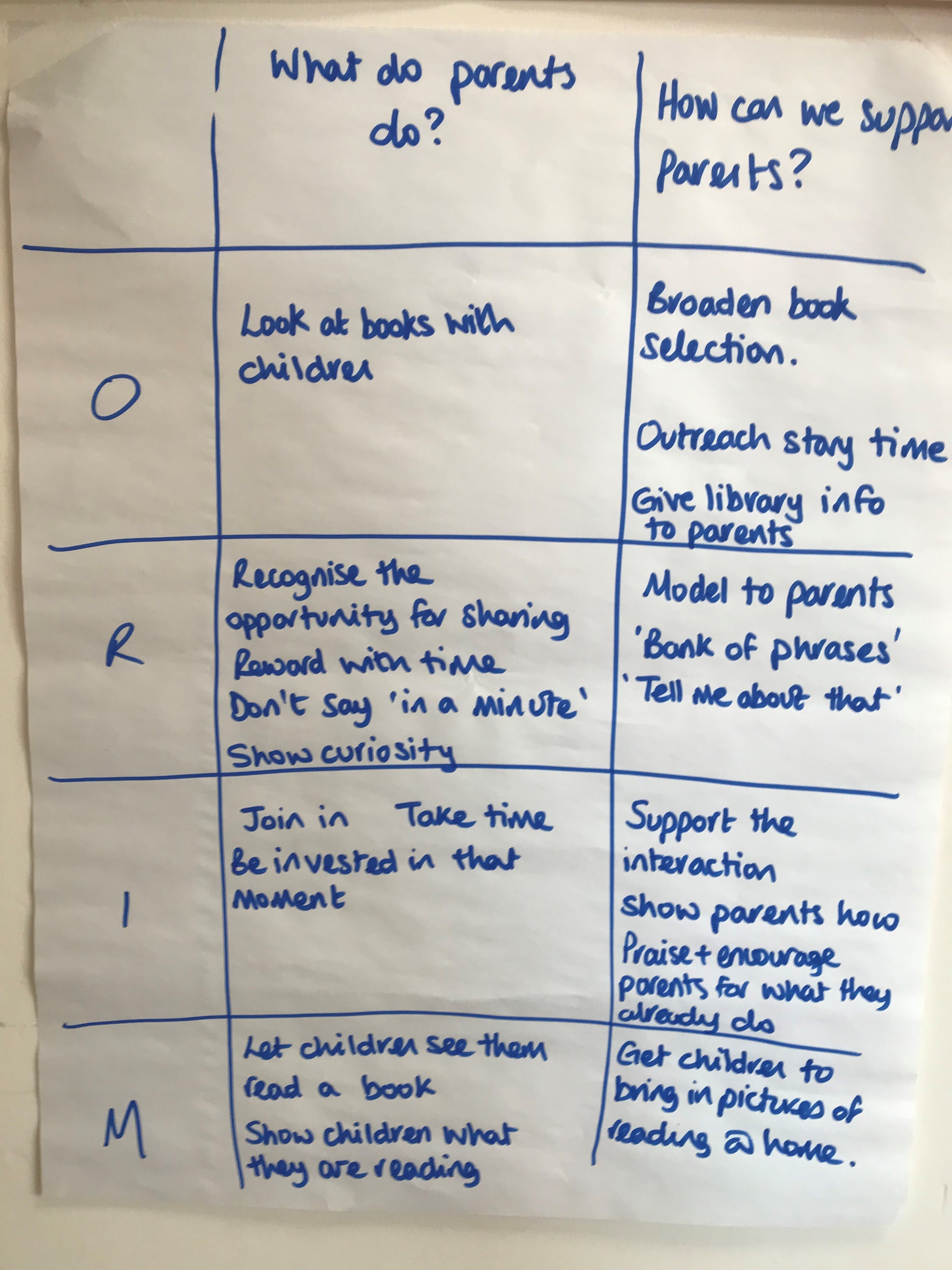
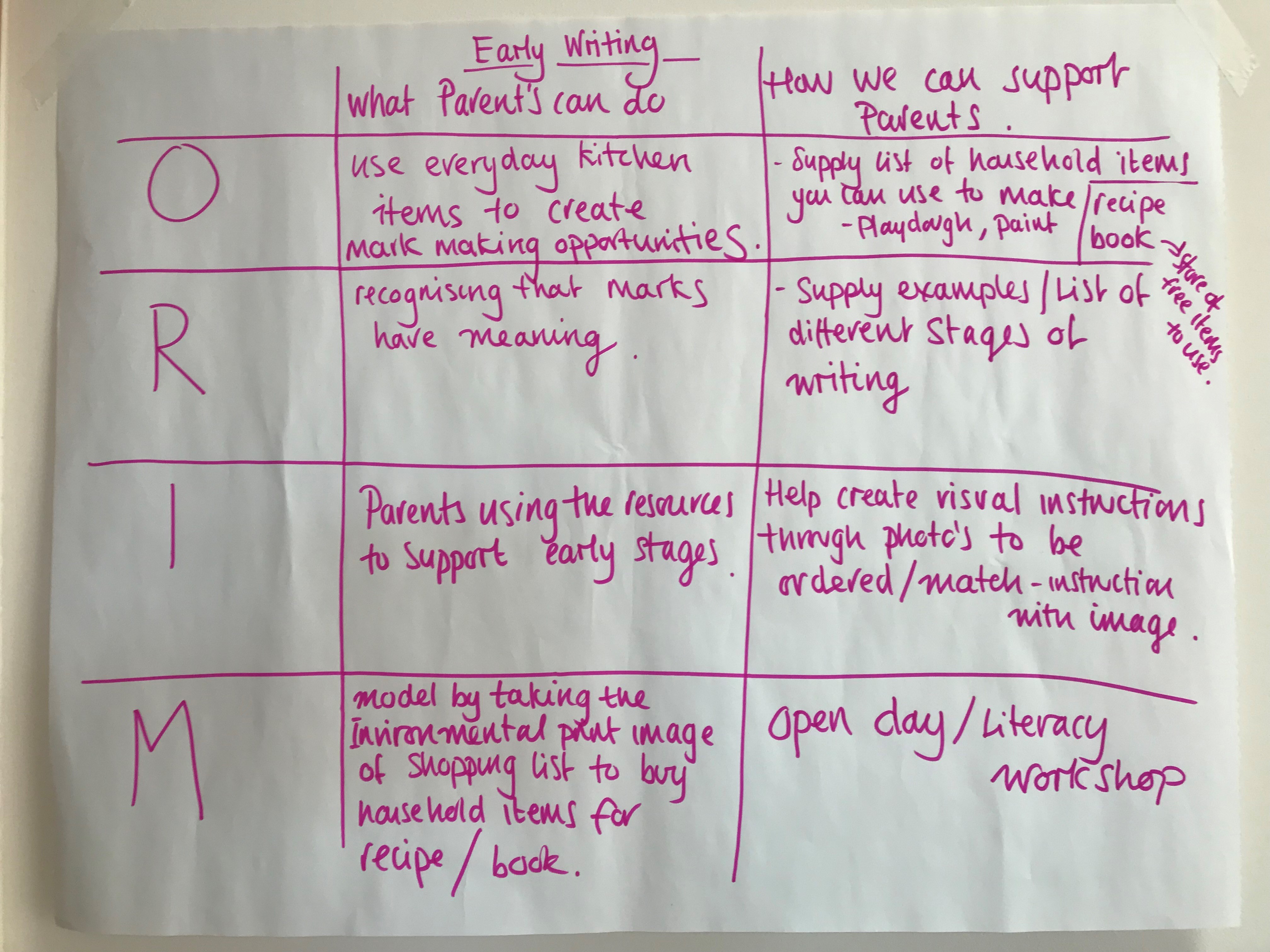
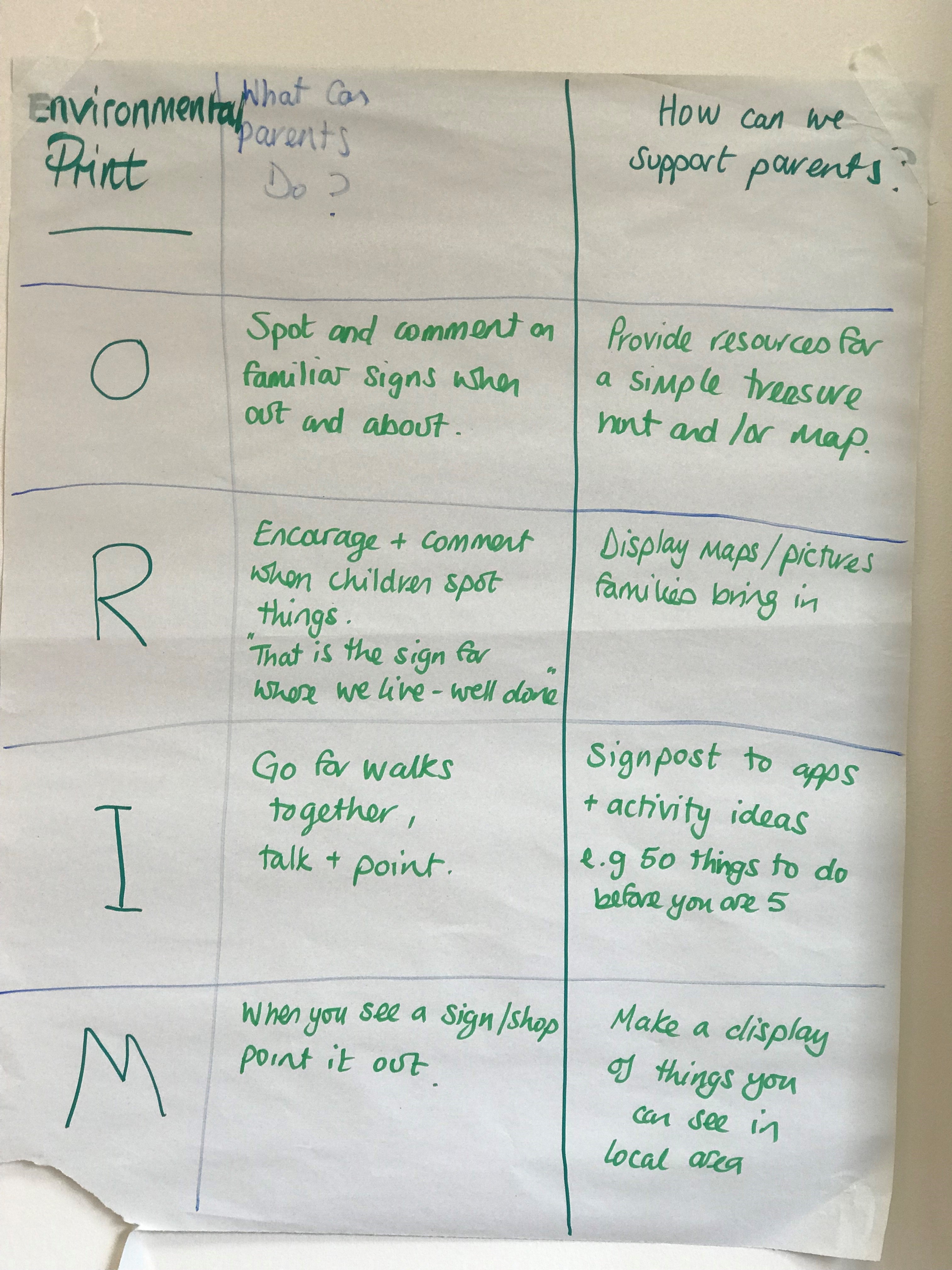
Feedback from participants
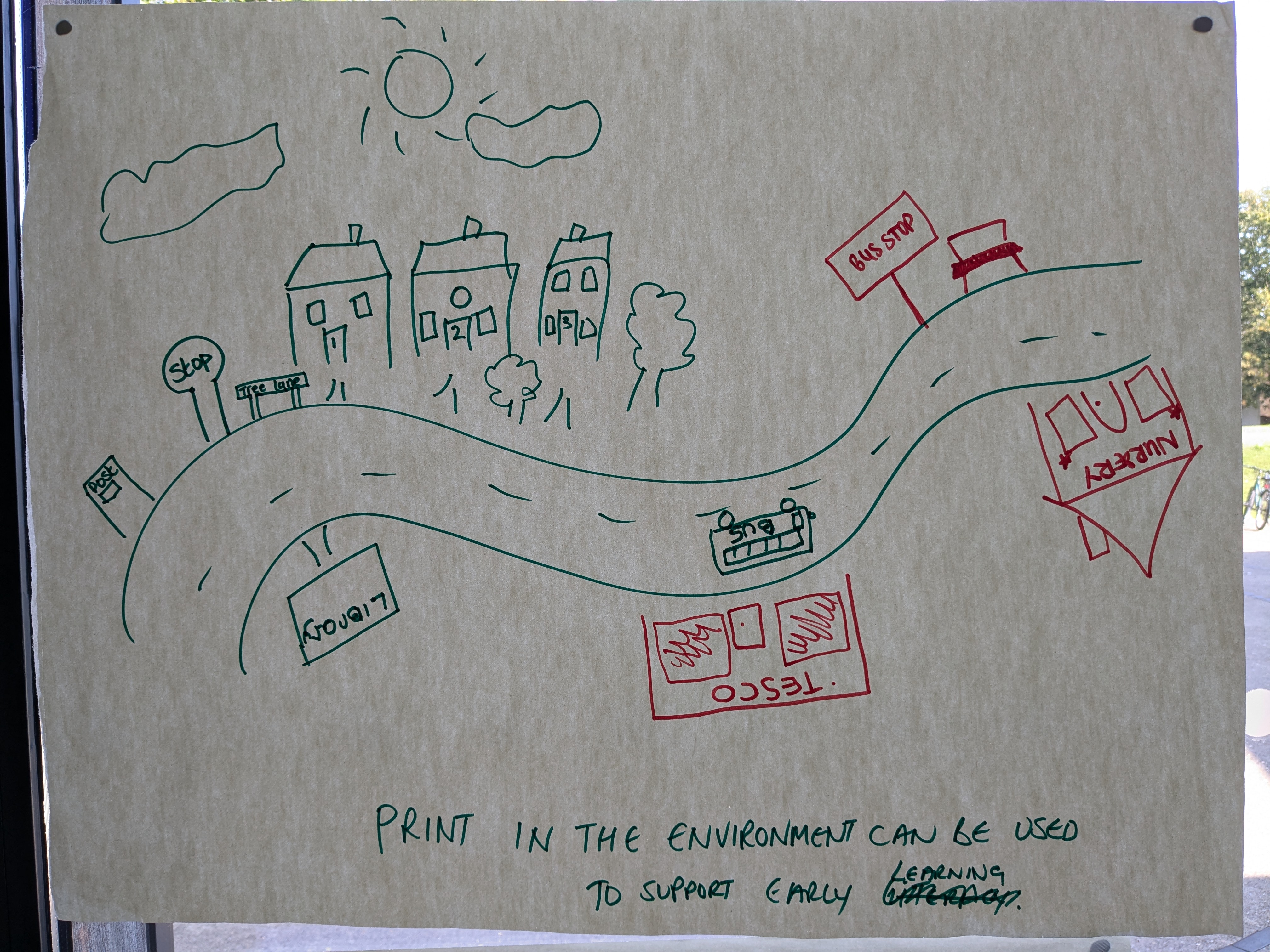
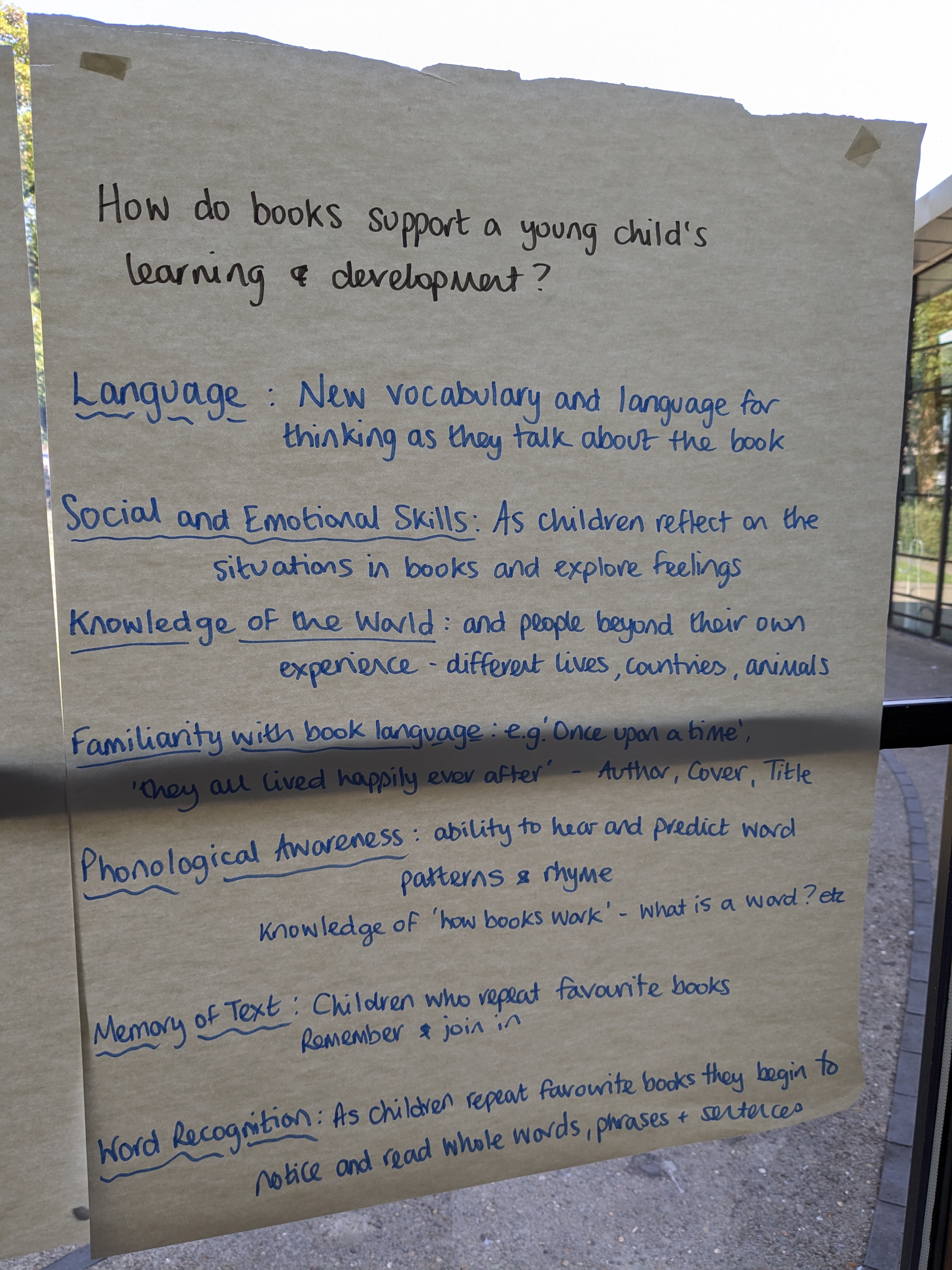
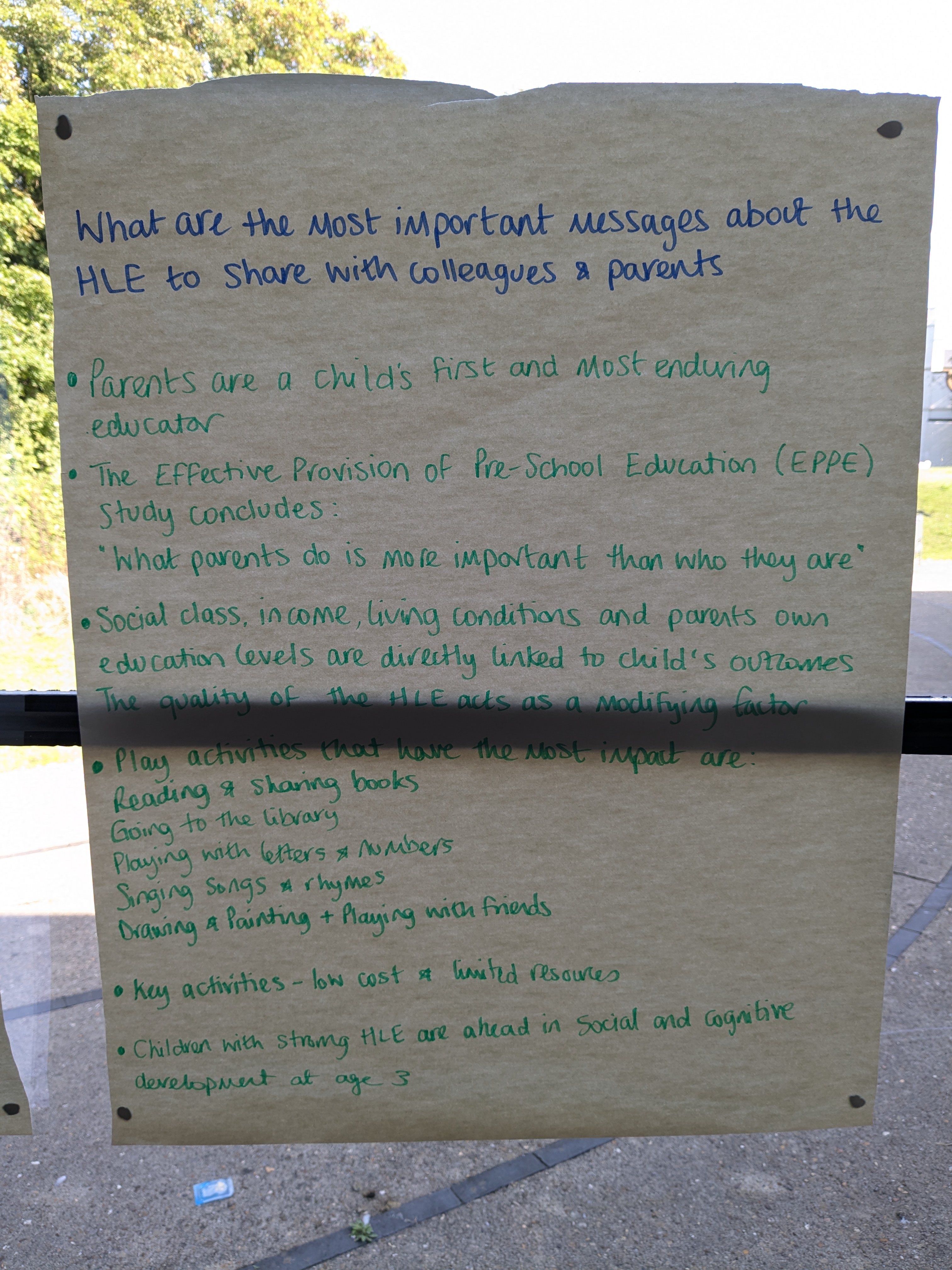
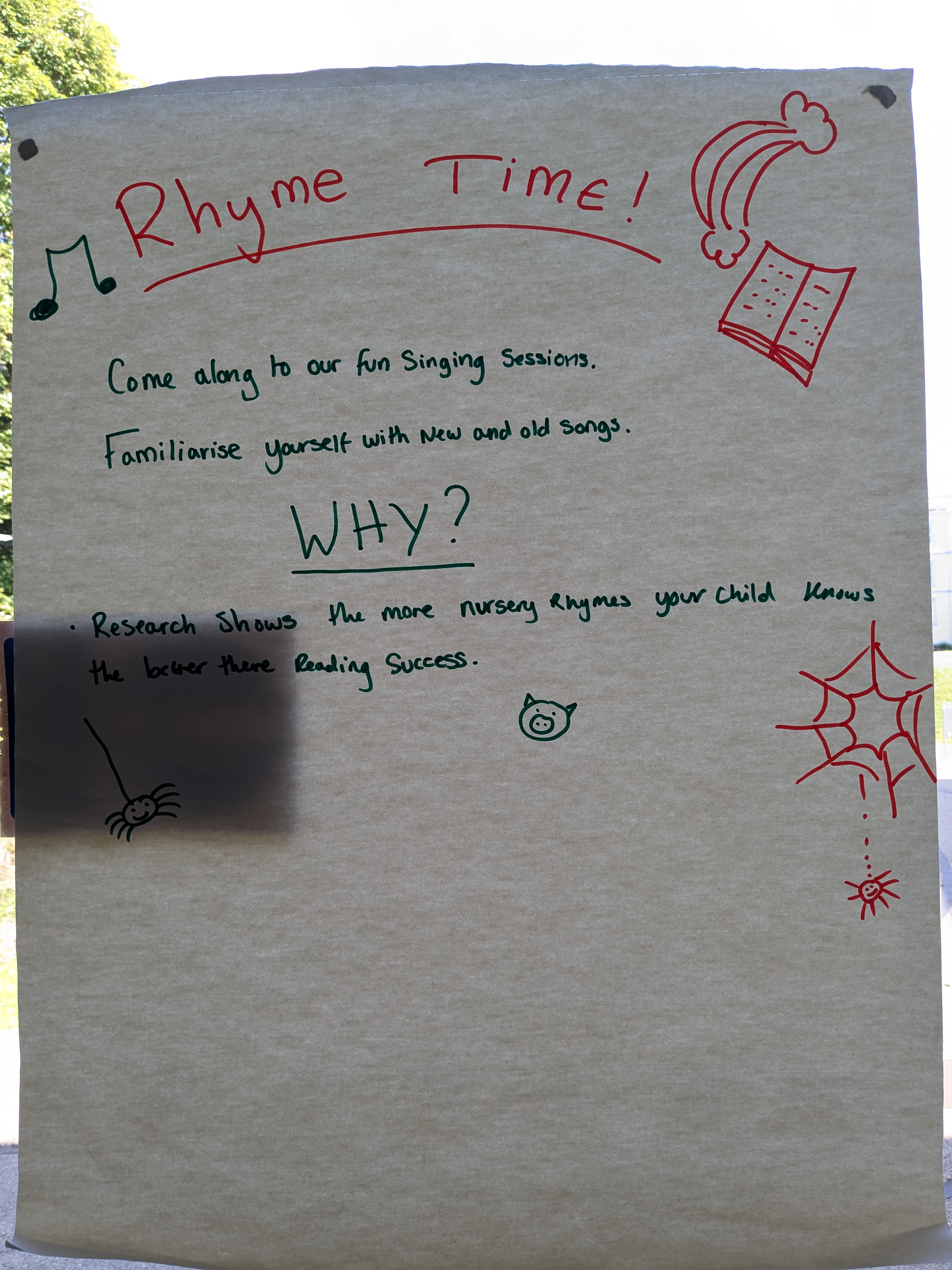
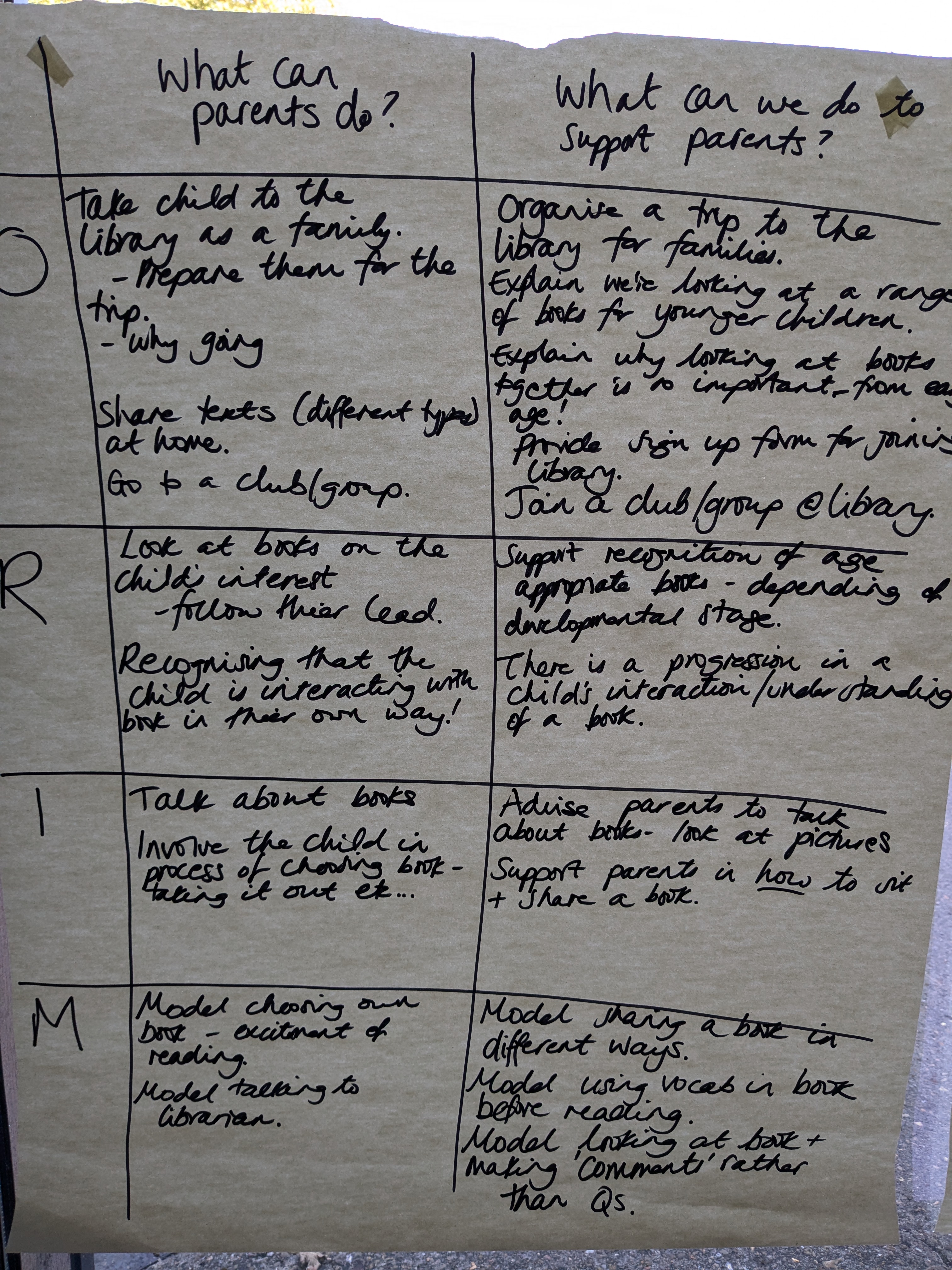
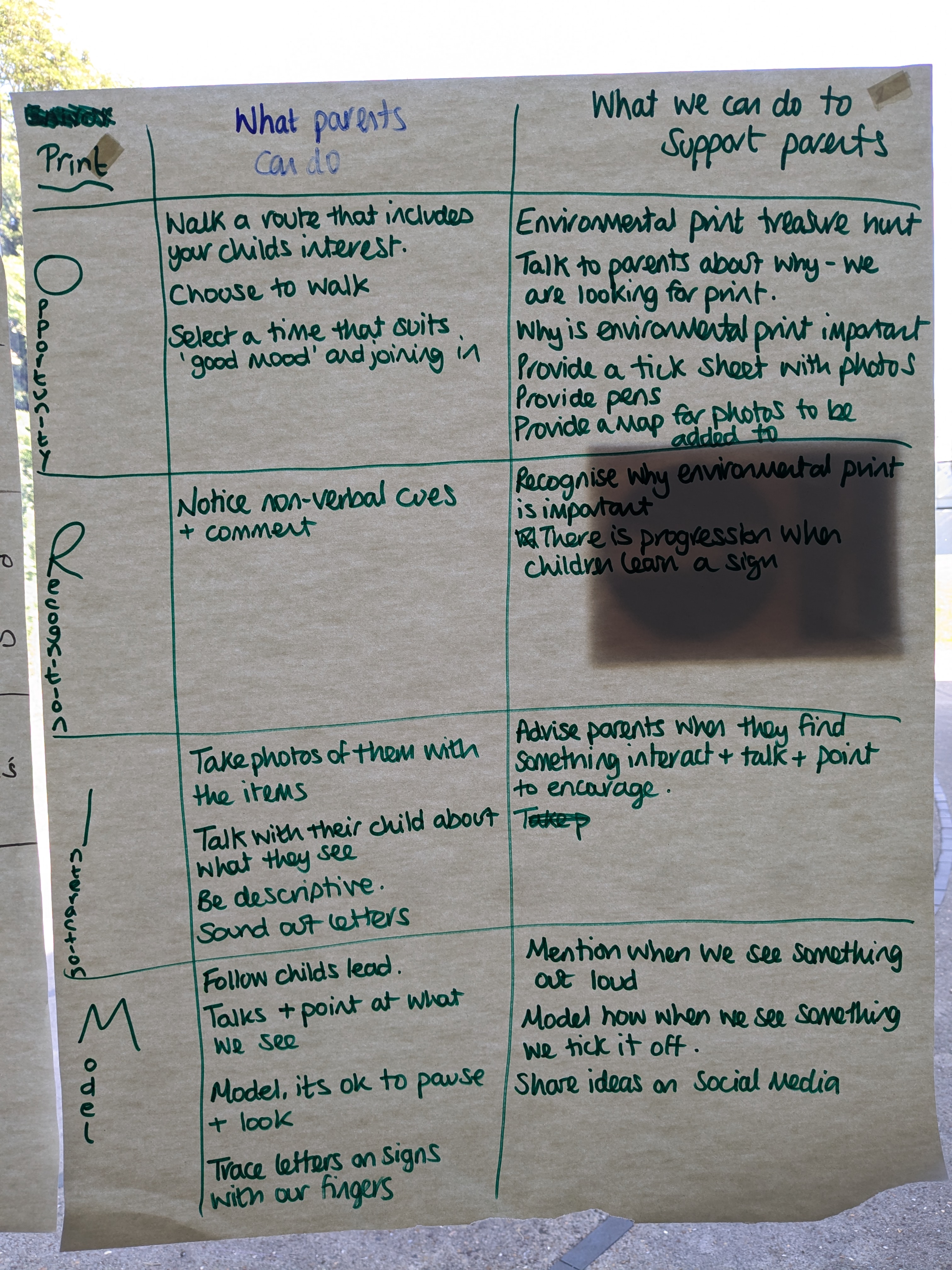
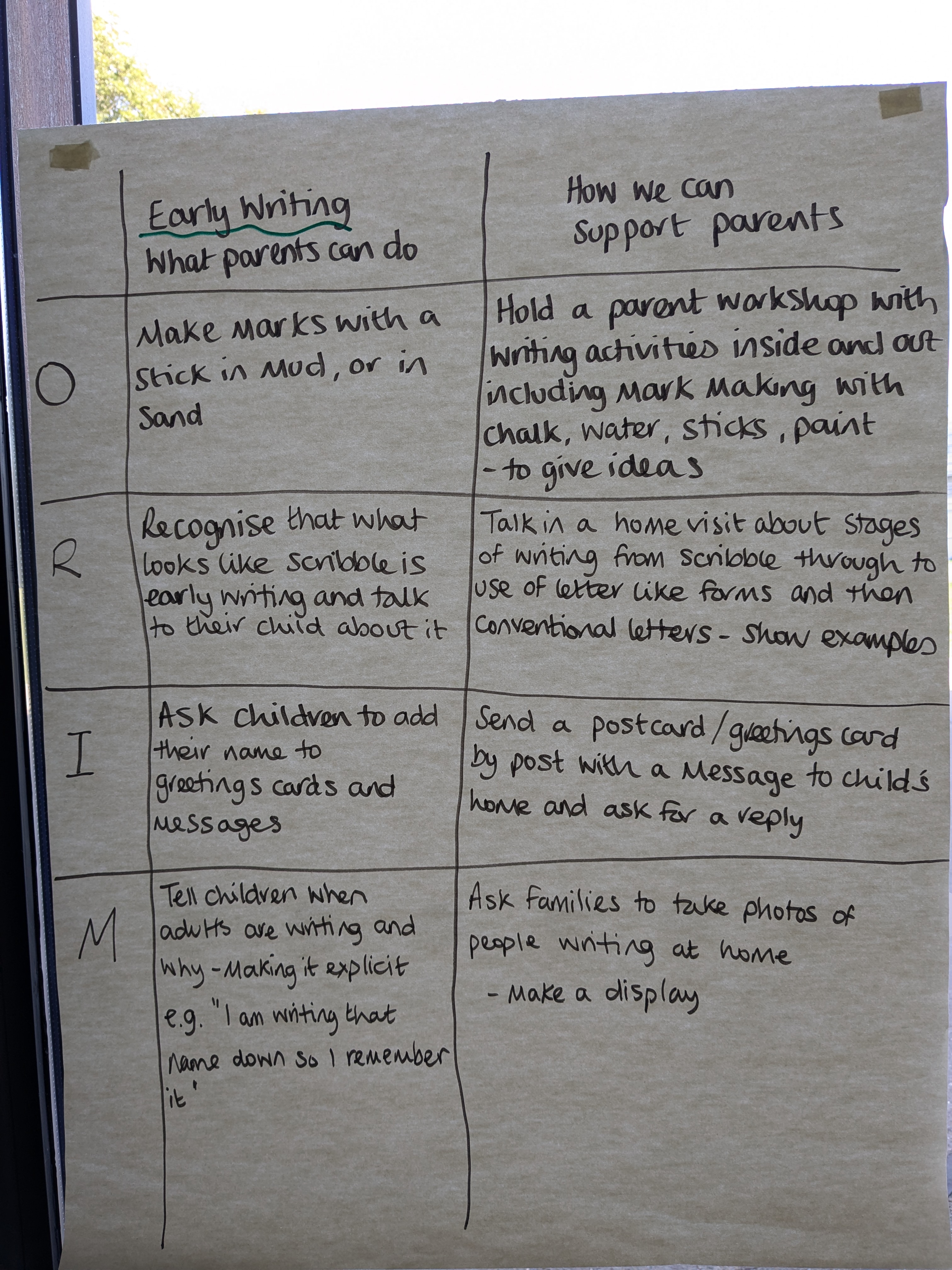
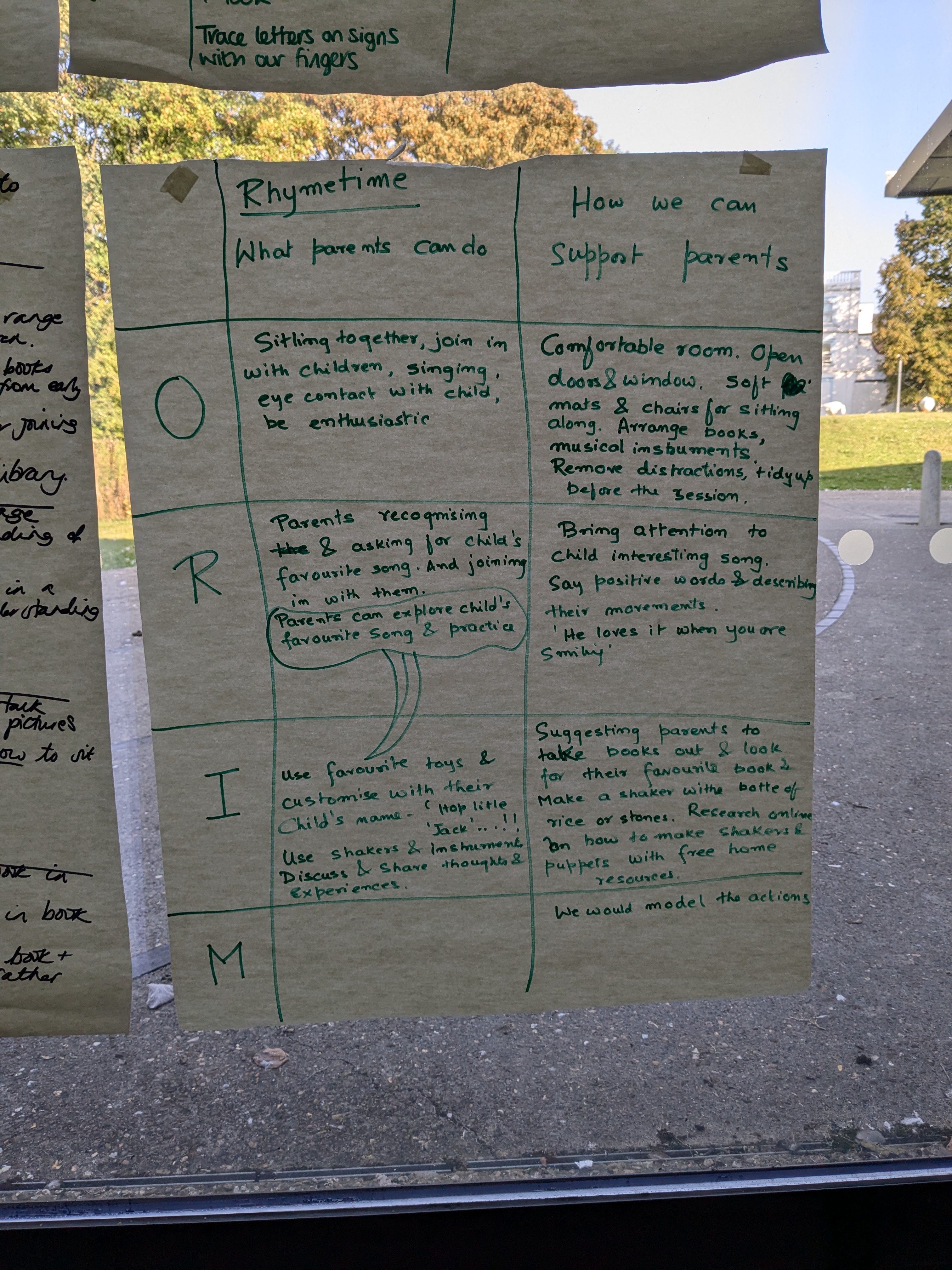

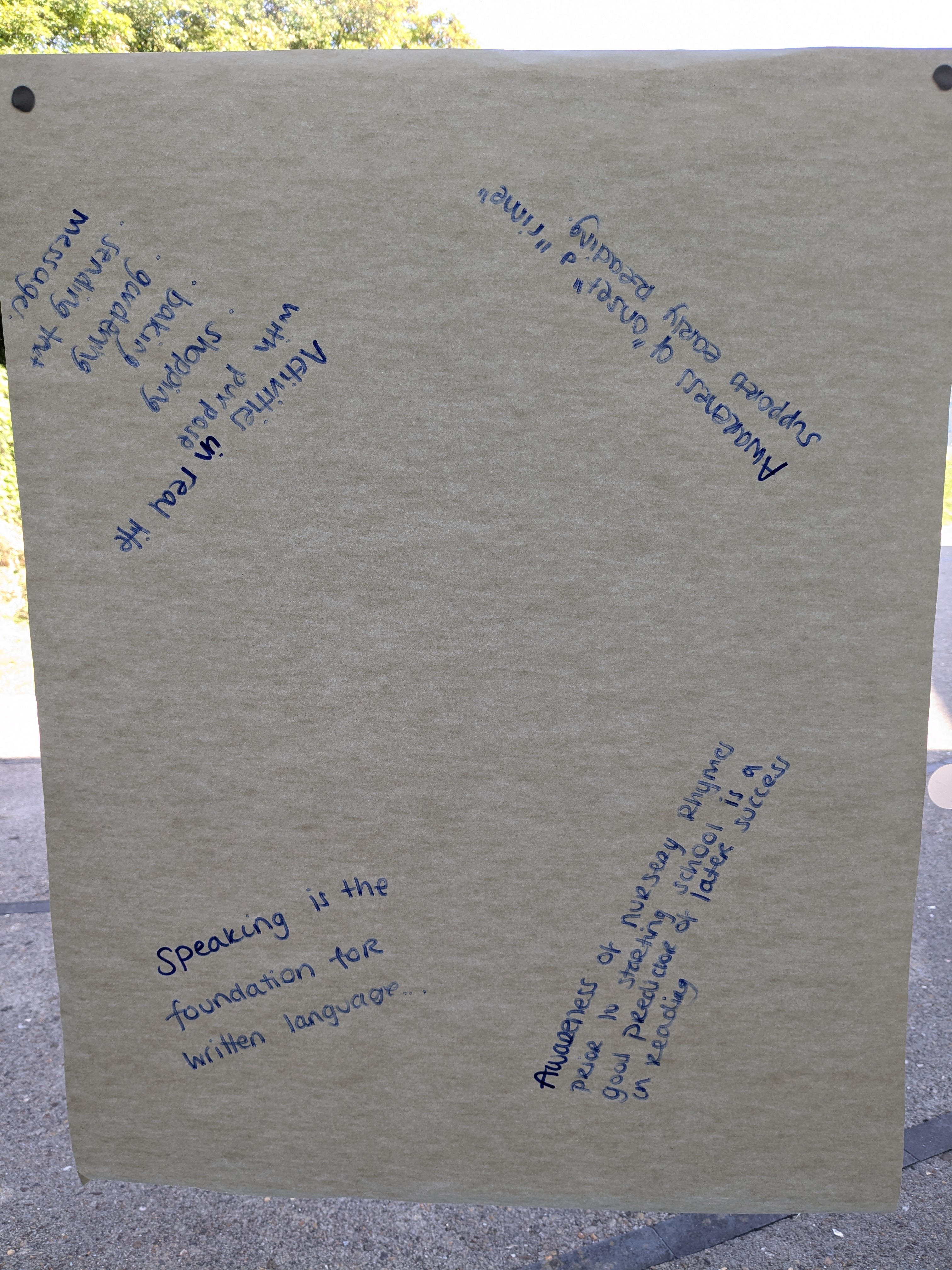

Please watch in YouTube for more accessibility options. - opens in a new tab

